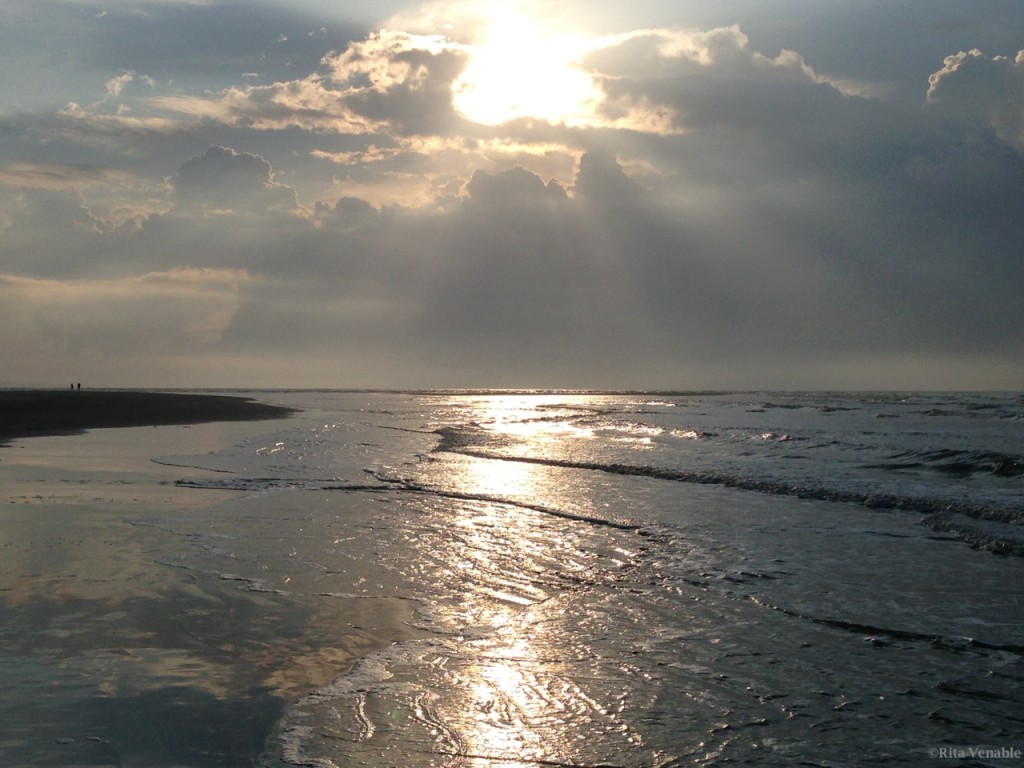My daughter, granddaughter-in-a-pouch, and I walked on the South Carolina beach after dinner. Every now and then, the baby realized how close she was to her mother—she reached up with her little hands and patted her face, smiling. Black skimmers glided along the water hunting for fish. We looked for seashells and dolphins.
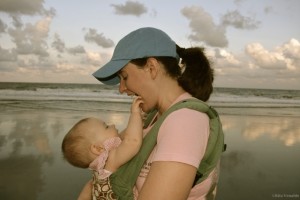
When we returned to our rental unit, I took from a bookshelf a basket of seashells collected by other visiting beachcombers. I sat down with the shells and the Carolina Nature Guide by Peter Meyer, and one by one, my daughter and I examined the shells to identify them.
We were delighted that we could! And what’s more, we dove into reading short descriptions of the creatures’ that had created the shells. Typically, when I find shells on the beach, I don’t consider that seashells are mollusk houses—external skeletons that once protected a living creature inside.

Scallops, for example, which may have lovely patterns on their shells, are mollusks that live in the open (not buried in the sand) in shallow waters of the sea or an estuary. They can swim to escape predation by clapping their shells together and forcing water out. Humans eat the muscle that holds the halves of the shell together. We put the scallops together; we had two of them.

Next, we separated out the beautiful and predaceous moon snail or shark eye. The rounded shape of the shell with a dark central spot resembles the eye of a shark. Upon finding an oyster, clam, or other mollusk, a moon snail drills a hole through its shell with a toothed tongue called a radula. What a scary Poesque story this would make for little clams sitting around the campfire—some crusty older clam mimicking the whirr and vibration of the drilling radula of a moon snail.
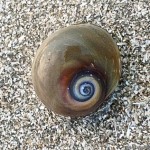

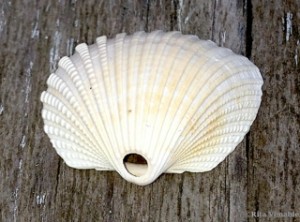
We saw five sand dollars which are more correctly called keyhole urchins. They lie buried beneath the sand in shallow water seabeds parallel to the beach. When alive, they are brownish. It is only when they die and are bleached by the hot sun that they turn characteristically white.

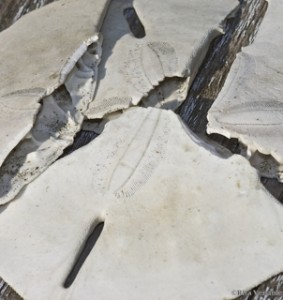
Now when I see these sea creatures, I will have some idea of where they live, what they eat, and who eats them. Understanding even a little part of this food chain helps me put puzzle pieces together. I have found them all on the beach before and hardly gave a thought as to their lives. Not one of these creatures exists alone even though I find them one by one. They were all once a part of a bigger seabed.
Did you ever wish there was a field guide to the people that you love? What would you do with that? Would you study the short explanations that told what their lives are like? Could you write them yourself?
What has shaped the lives of the people we most love? Where have they travelled and what community are they a part of now? Seeing beyond mere identification into community would give us better understanding of who people are and how we intersect with them. The seabeds where people came from do have bearing on where they are today. Knowing someone’s origins gives clues to their advantages in life and/or what they have had to overcome.
Determining to know them and their current community paints a more complete picture. What their daily routines are, how they make decisions, how they spend their leisure and with whom are questions that help give a mental picture of community. What do they believe about themselves and others? What stresses them? What gives them joy?
Just as we can’t examine every seashell that comes into our lives, we can’t know every facet of every person’s life deeply, but the ones that matter to us most, what do we do with them? Are they just “shells on the beach” to be glanced at and walked by, or do we really think about where they have come from and what they are going through by talking to them in a meaningful way?
The first night our family sat down to dinner, baby Savannah looked up from her high chair with delightful insight. She looked at each of us in turn and it was apparent that she knew who we all were. She is the newest little oyster in our bed, the smallest clam. It is good to be in the same seabed. Getting to know her and our family members in a fresh way should be more than just sloshing along together in the shallows.
I long to dive into deeper waters to see what is there.
